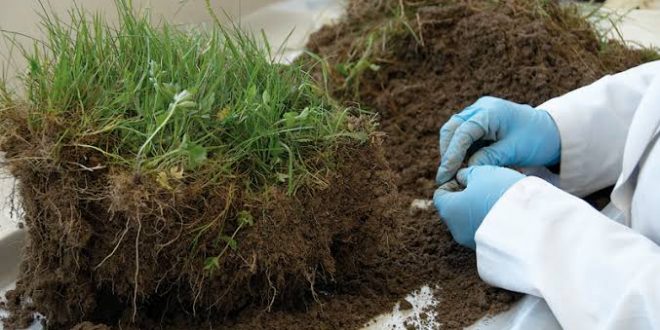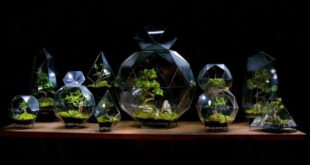In the soil, there are different kinds of constitunets. These properties are divided into two major types- solid and solution.
This composition of soil solids and soil solution is discussed in this article.
Chemical Composition of Soil Solids
Soil Solid consists of soil mineral matter and soil organic matter. The composition of soil varies from place to place so do its mineral and organic matter composition.
Best safe and secure cloud storage with password protection
Get Envato Elements, Prime Video, Hotstar and Netflix For Free
Best Money Earning Website 100$ Day
#1 Top ranking article submission website
Soil Mineral Matter
All soils do not have the same mineral matter composition. It varies depending upon the parent material. Still, some common chemical elements in soil are found responsible for the mineral matter composition. These are as follows:
Chemical Elements % (by weight)
Non-metals:
Oxygen 46.60
Silicon 27.72
Total= 74.32%
Metals:
Aluminium 8.13
Iron 5.00
Calcium 3.63
Sodium 2.83
Potassium 2.59
Magnesium 2.09
Others 1.41
Total= 25.68%
Soil Organic Matter
Organic matter generally comes in soil from plant and animal residues. Among them, plant tissues mainly through decomposition forms the organic matter. So, the composition of organic matter is similar to the composition of a fresh plant tissue. This composition can mainly be divided into two parts:
a) Water = 75% (60-90%)
b) Dry Matter =25% (10-40%)
This dry matter generally have the following constituent elements:
| Total | 100% | 25% |
| Element | In 100% Dry matter | In 25% Dry matter of organic matter |
|---|---|---|
| Carbon | 42% | 10.5% |
| Oxyzen | 42% | 10.5% |
| Hydrogen | 8% | 2% |
| Ash/others | 8% | 2% |
(These composition may vary depending upon plant type.)
Moreover, the organic compounds which are chiefly found in detectable form in the soil organic matter are:
i) Carbohydrates (60%)
a) Sugars and starches = 1-5%
b) Hemicelluloses = 10-30%
c) Cellulose = 20-50%
ii) Lignins = 10-30%
iii) Protein = 1-15% (Water soluble and crude protein)
iv) Fats, waxes, and tanins = 1-8%
v) Polyphenols = 2%
Besides, humic acid, fulvic acid, cholorophyll etc. may also be present.
Soil Solution
Soil solution refers to the liquid phase of soil which consists of dissolved substances both organic and inorganic, in ionic or in molecular form.
Composition of soil solution
Soil solution is composed of both organic and inorganic constituents. These are mentioned below:
i) Organic constituents
a) Organic acids:
Formic acid, Acetic acid, Oxalic acid, Malonic acid, Malic acid, Citric acid, Tartaric acid, Gluconic acid, 2-ketogluconic acid, Gallic acid, Salicylic acid, Lactic acid.
b) Amino acids:
Alanine, Lysine, Arginine, Aspartic acid, Glycine, Glutamic acid.
ii) Inorganic constiuents
a) Essential elements (17):
The elements which are required for the normal growth and reproduction of plants in order to completing its life cycle are called essential elements. There are 17 essential elements found in different forms in the soil.
| Element | Form in the soil |
| 1. Carbon | C |
| 2. Hydrogen | H |
| 3. Oxygen | O |
| 4. Pottasium | k+ |
| 5. Calcium | Ca2+ |
| 6. Magnesium | Mg2+ |
| 7. Nitrogen | NH4+, NO3– |
| 8. Phosphorus | H2PO4–, HPO42- |
| 9. Sulpur | SO42- |
| 10. Molybdenum | MoO42- |
| 11. Iron | Fe2+, Fe3+ |
| 12. Cobalt | Co2+ |
| 13. Copper | Cu2+ |
| 14. Chlorine | Cl– |
| 15. Manganese | Mn2+ |
| 16. Zinc | Zn2+ |
| 17.Boric Acid mooecule | H3BO3 |
b) Beneficial elements (6):
An element is considered to be beneficial when-
- It is able to substitute an essential element, for example, sodium can substitute for some of the potassium in sugar beets.
- That are sometimes needed by plants.
- That benefits plants.
There are 6 beneficial element as following:
- Sodium (Na)
- Fluorine (F)
- Iodine (I)
- Silicon(Si)
- Strontium(Sr)
- Barium (Ba)
Concentration of soil solution
The ideal concentration of soil solution is 0.05- 0.2% which is the range of tolerance of salt proportion in soil solution by plants.
- 0.05-0.2% = favorable proportion of salt for plants.
- 0.2-0.5% = plants can tolerate but feels uncomfortable.
- Greater than 0.5% = plants cannot tolerate.
- Less than 0.05% = unfavorable condition, element deficiencies are found to occur.
Source:
- Inorganic constituents nutrients
- Class lecture of Farah Monowara Jahangiri, Department of Soil, Water and Environment, University of Dhaka.
 Plantlet The Blogging Platform of Department of Botany, University of Dhaka
Plantlet The Blogging Platform of Department of Botany, University of Dhaka





